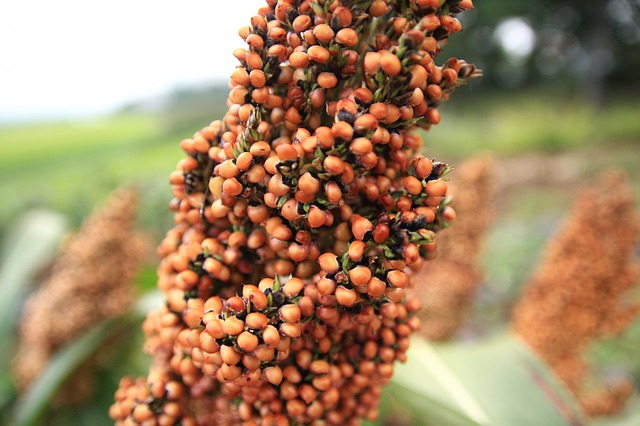Sorghum is a gluten-free cereal grain that originated in Africa about 4000-5000 years ago. The US is now the largest producer of sorghum and much of what is grown here is used in animal feed.
Sorghum has become increasingly popular in gluten-free baking. Its taste is close to wheat flour and it has a mild flavor and a slightly sour aftertaste.
Mixed with other flours and starches it works well for baked goods like cakes, cookies, muffins, and more.
Nutritional Information
Sorghum is high in fiber and iron. It is rich in anti-oxidants. And currently, sorghum is a hybrid grain and is not genetically modified.
Like corn, sorghum is an incomplete source of protein. It does not supply adequate amounts of lysine, an important essential amino acid (protein).
The body requires lysine for growth, bone health and for converting fats into energy. But this is not really a problem in the westernized countries where it is easy to find other sources of lysine.
Forms of Sorghum
There are several forms of sorghum available.
White sorghum flour is made from white food-grade sorghum that has the hull removed and milled like traditional flours.
Whole grain sorghum flour is milled with the entire grain without the hull removed. Whole grain sorghum resembles bulgar or wheat berries and is a hearty, chewy solution to meeting the daily goal of 2 to 3 servings of whole grain.
I have not tried the whole grain sorghum yet but since I love bulgar wheat this seems like a great substitute for tabbouleh salad in the summer. Sorghum is also known as milo flour and in India as jowar atta.
White sorghum flour is high in insoluble fiber with relatively small amounts of soluble fiber. The protein and starch components of grain sorghum are more slowly digested than other cereals and so stays with a person longer. Slower rates of digestibility are also beneficial for diabetics.
Where to Buy
I got my sorghum flour from a coop and it is produced by Bob’s Red Mill. It was a fair price but still more than white or wheat flour. Anywhere Bob’s Red Mill is sold sorghum flour probably will be available.
One article I read recommends buying it at an Indian store where it would probably be sold under the name of Jowar Atta.
How to Use
I use sorghum as a part of my gluten-free flour blend mixing it with buckwheat or brown rice flour or millet flour. I often use 70% flours including sorghum and 30% starch.
I find that sorghum works so well in so many different baked goods that I try to get some in most of what I make. The products with sorghum do not come out grainy as they do with brown rice flour, although I have read that used alone sorghum does not always come out nicely.
This is why sorghum is recommended as part of a blend. This has made a huge difference for me as I think about gluten-free baking.
Whole sorghum can also be popped like popcorn. A little oil in a heavy pan along with whole grain sorghum is all that is needed for some simple enjoyment.
Another option is to boil or roast the whole grains and serve like rice as a side dish to a meal or as a hot breakfast cereal. To prepare, soak the whole grain overnight in cool water, then drain and cook 1 cup of whole grain sorghum in 3 cups of water for about 45 to 60 minutes.
Storage
Sorghum flour should be stored in an airtight container and used within a few months. If kept longer it is best stored in a freezer or refrigerator.
For more information:
Gluten Free Ingredients: Sorghum
- Are Pasteurized Almonds Good or Bad? - January 31, 2022
- Nutrition of Peanuts - November 20, 2013
- Happy With Hickory Nuts - November 13, 2013



That is cool. I didn’t know you could pop sorghum like popcorn!
Thanks for compiling this info so nicely. Great resource!
Thanks for linking up to Wellness Wednesday – please consider joining us again this week! 🙂